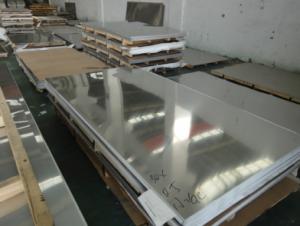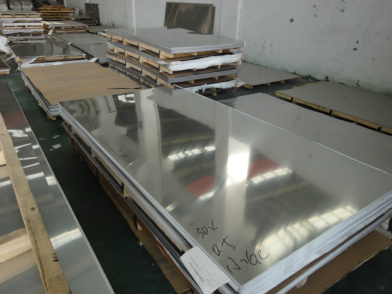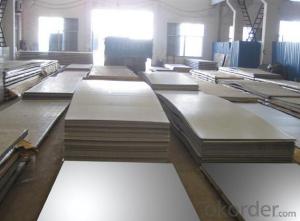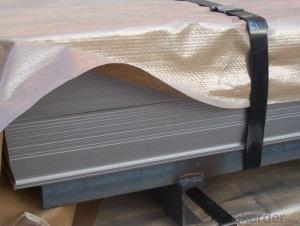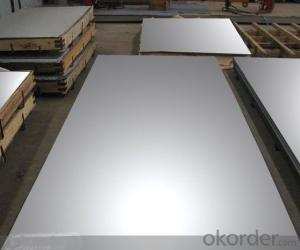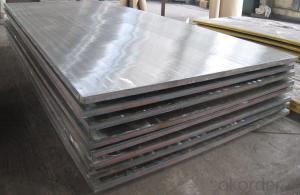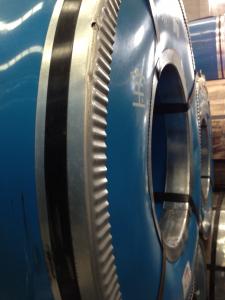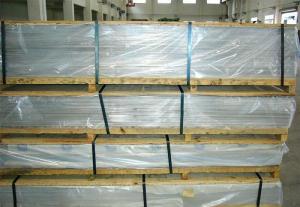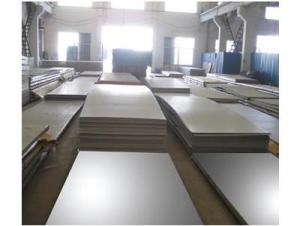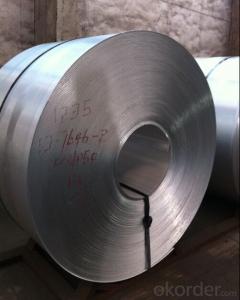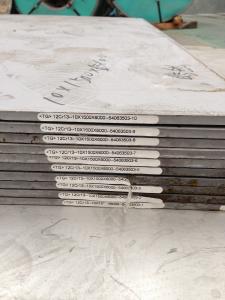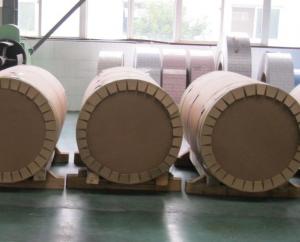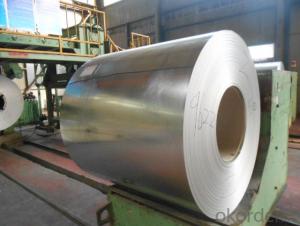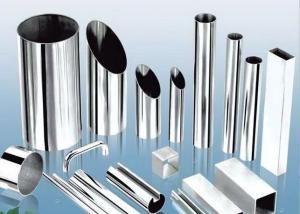Stainless Steel Slab With Best Price In Stock
- Loading Port:
- Shanghai
- Payment Terms:
- TT or LC
- Min Order Qty:
- 2 m.t.
- Supply Capability:
- 4000 m.t./month
OKorder Service Pledge
OKorder Financial Service
You Might Also Like
1.Structure of Product Description
we are one of the best hot rolles and cold rolled Stainless steel sheet suppliers in CHINA.
There are many different grades, such as: 200 series, 300 series, 400 series, 900series, etc. The detailed grade are as follows: 201, 202, 301, 304, 316, 410, 420, 430, etc.
The surface is including 2B, BA, Mirror Finish, Checkered, etc.
2. Main features of the product
a. Competitive price
b. Frist-Class Service.
c. Shortest service.
3. Image.
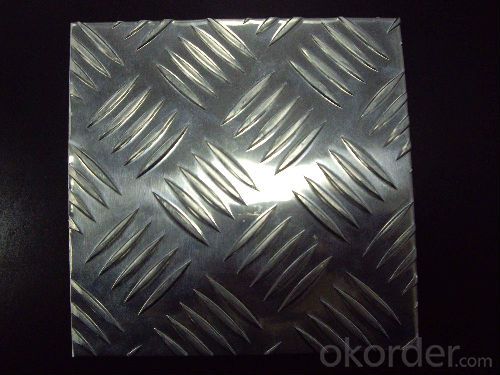
4. Product detailed sizes:
1000mm*2000mm, 1219mm*2438mm,1220mm*2440mm, 1250mm*2500mm,1500mm*3000mm, etc.
5. FAQ:
What is the quality standard?
---Usually our standard is GB3880-2006 or else.
What is the width range?
---It is from 1000mm to 2500mm, etc.
What is the length range?
---It is from 2000mm to 6000mm, etc.
What is the MOQ for your products yet?
Where is your client from?
---Normally it is from Japan, USA, ENGLISH, SINGAPORE, ETC.
What is your mainly products?
---Normally they are stainless steel sheet, stainless steel coil, stainless steel checkered sheet, stainless steel mirror finished sheet, color coated stainless steel sheet, etc.
- Q: How about stainless steel grades?
- 304 - that is, 18/8 stainless steel. GB is 0Cr18Ni9. 309 - better temperature resistance than 304. 316 - after 304, second of the most widely used steel grades are used mainly in the food, pharmaceutical and pharmaceutical industries, and molybdenum is added to obtain a special corrosion resistant structure. Because of its better resistance to chloride corrosion than 304, it is also used as "ship steel". SS316 is usually used in nuclear fuel recovery devices. Grade 18/10 stainless steel usually meets this application level. [
- Q: Can stainless steel sheets be used for food processing or medical applications?
- Yes, stainless steel sheets can be used for food processing or medical applications. Stainless steel is a highly durable and corrosion-resistant material, making it an ideal choice for these industries where hygiene and cleanliness are of utmost importance. In food processing, stainless steel sheets are commonly used for various applications such as countertops, work surfaces, sinks, storage containers, and equipment. Its non-porous surface prevents the growth of bacteria and makes it easy to clean and sanitize. Similarly, in medical applications, stainless steel sheets are widely used due to their excellent resistance to corrosion, heat, and chemicals. They are used for medical instruments, surgical equipment, implants, and other medical devices that require high levels of cleanliness and sterilization. Stainless steel's biocompatibility and resistance to body fluids make it suitable for implantable devices like pacemakers, joint replacements, and dental implants. Overall, stainless steel sheets are a preferred choice for food processing and medical applications due to their hygienic properties, durability, and resistance to corrosion.
- Q: What are the standard sizes of stainless steel sheets?
- The standard sizes of stainless steel sheets can vary depending on the specific requirements and applications. However, common standard sizes for stainless steel sheets include 4 feet by 8 feet, 4 feet by 10 feet, and 5 feet by 10 feet. Other sizes may also be available based on customer needs and supplier capabilities.
- Q: Are stainless steel sheets resistant to corrosion?
- Yes, stainless steel sheets are generally highly resistant to corrosion due to the presence of chromium in their composition, which forms a protective oxide layer on the surface. This oxide layer acts as a barrier, preventing the metal from being exposed to corrosive elements and ensuring its durability in various environments.
- Q: Are stainless steel sheets suitable for architectural column covers or cladding?
- Architectural column covers or cladding can be effectively achieved using stainless steel sheets. This material is highly durable and resistant to corrosion, making it an ideal choice for outdoor applications. It can withstand various weather conditions without deteriorating or rusting. Furthermore, stainless steel provides a sleek and modern look, improving the overall appearance of the building. In addition, architects and designers can easily fabricate and install stainless steel sheets, allowing for a wide range of design options. Overall, stainless steel sheets are an outstanding choice for architectural column covers or cladding due to their durability, resistance to corrosion, aesthetic appeal, and ease of installation.
- Q: Can stainless steel sheets be used for solar panel frames?
- Solar panel frames can indeed be made from stainless steel sheets. The use of stainless steel is quite popular for solar panel frames because of its exceptional strength, durability, and resistance to corrosion. It can endure various weather conditions, such as extreme heat, humidity, and exposure to sunlight. In addition, stainless steel is both non-magnetic and non-combustible, ensuring the safety of solar panel installations. Moreover, its high strength-to-weight ratio permits lighter frame designs, reducing the overall weight of the solar panels and facilitating their installation. All in all, stainless steel sheets are a dependable and enduring choice for constructing solar panel frames.
- Q: Can stainless steel sheets be used for elevator handrails or grab bars?
- Yes, stainless steel sheets can be used for elevator handrails or grab bars. Stainless steel is a common material used for these applications due to its durability, corrosion resistance, and aesthetic appeal. It is able to withstand heavy use and provides a secure grip, making it suitable for elevator handrails and grab bars.
- Q: What is the lifespan of stainless steel sheets?
- The lifespan of stainless steel sheets can vary depending on various factors such as the grade of stainless steel, the environment in which they are used, and the maintenance practices followed. In general, stainless steel sheets have a long lifespan and are known for their durability and corrosion resistance. They are designed to withstand harsh conditions and are resistant to rust, stains, and other forms of degradation. Stainless steel sheets are typically made from austenitic stainless steel, which is known for its high levels of chromium and nickel. These elements provide excellent corrosion resistance and make stainless steel sheets highly resistant to rust and staining. As a result, stainless steel sheets can last for many years, often outlasting other materials such as aluminum or regular steel. The lifespan of stainless steel sheets can be further extended through proper care and maintenance. Regular cleaning and removal of any contaminants or debris can help prevent corrosion and maintain the appearance and performance of the sheets. Additionally, applying protective coatings or finishes can provide an extra layer of protection against corrosion and wear. While it is difficult to provide an exact lifespan for stainless steel sheets due to the variability of factors involved, with proper care and maintenance, they can easily last for several decades. In some cases, stainless steel sheets have been known to last for over a century. Therefore, investing in stainless steel sheets is often seen as a long-term solution, offering durability and cost-effectiveness over an extended period.
- Q: Can stainless steel sheets be used for decorative signage?
- Yes, stainless steel sheets can be used for decorative signage. Stainless steel is a versatile material that offers a sleek and modern aesthetic, making it a popular choice for various applications, including signage. Its durability and resistance to corrosion make it suitable for both indoor and outdoor use. Stainless steel sheets can be laser-cut, engraved, or etched to create intricate designs, logos, or lettering, allowing for endless possibilities in creating decorative signage. Whether it's for commercial, residential, or public spaces, stainless steel sheets can provide a sophisticated and long-lasting solution for decorative signage.
- Q: How do I prevent fretting corrosion on stainless steel sheets?
- Fretting corrosion can be a common issue with stainless steel sheets, but there are several steps you can take to prevent it: 1. Proper Handling: When handling stainless steel sheets, it is crucial to avoid any scratching or rubbing of the surface that could lead to fretting corrosion. Use gloves and avoid contact with other metals or rough surfaces. 2. Cleaning: Regularly clean the stainless steel sheets using mild detergents or specialized stainless steel cleaners. This helps remove any contaminants that can initiate corrosion and also prevents the build-up of dirt or grime that can contribute to fretting corrosion. 3. Lubrication: Applying a suitable lubricant or anti-seize compound on the contact surfaces can minimize friction and prevent fretting corrosion. This is especially important in applications where there is repeated movement or vibration. 4. Avoiding Metal-on-Metal Contact: Whenever possible, try to isolate stainless steel sheets from direct contact with other metals. This can be done by using insulating materials, gaskets, or non-metallic spacers to create a barrier between the stainless steel and potentially corrosive materials. 5. Regular Inspection: Periodically inspect the stainless steel sheets for any signs of fretting corrosion, such as small cracks, discoloration, or pitting. Early detection allows for prompt action to prevent further damage. 6. Protective Coatings: Applying a protective coating, such as a passivation treatment or a corrosion-resistant paint, can provide an additional layer of protection against fretting corrosion. Consult with a professional to determine the most suitable coating for your specific application. 7. Proper Storage: When not in use, store stainless steel sheets in a clean, dry environment to minimize exposure to moisture or corrosive substances. Ensure that the storage area is well-ventilated and free from any contaminants that could potentially initiate fretting corrosion. By following these preventive measures, you can significantly reduce the risk of fretting corrosion on stainless steel sheets and prolong their lifespan.
Send your message to us
Stainless Steel Slab With Best Price In Stock
- Loading Port:
- Shanghai
- Payment Terms:
- TT or LC
- Min Order Qty:
- 2 m.t.
- Supply Capability:
- 4000 m.t./month
OKorder Service Pledge
OKorder Financial Service
Similar products
Hot products
Hot Searches
Related keywords
